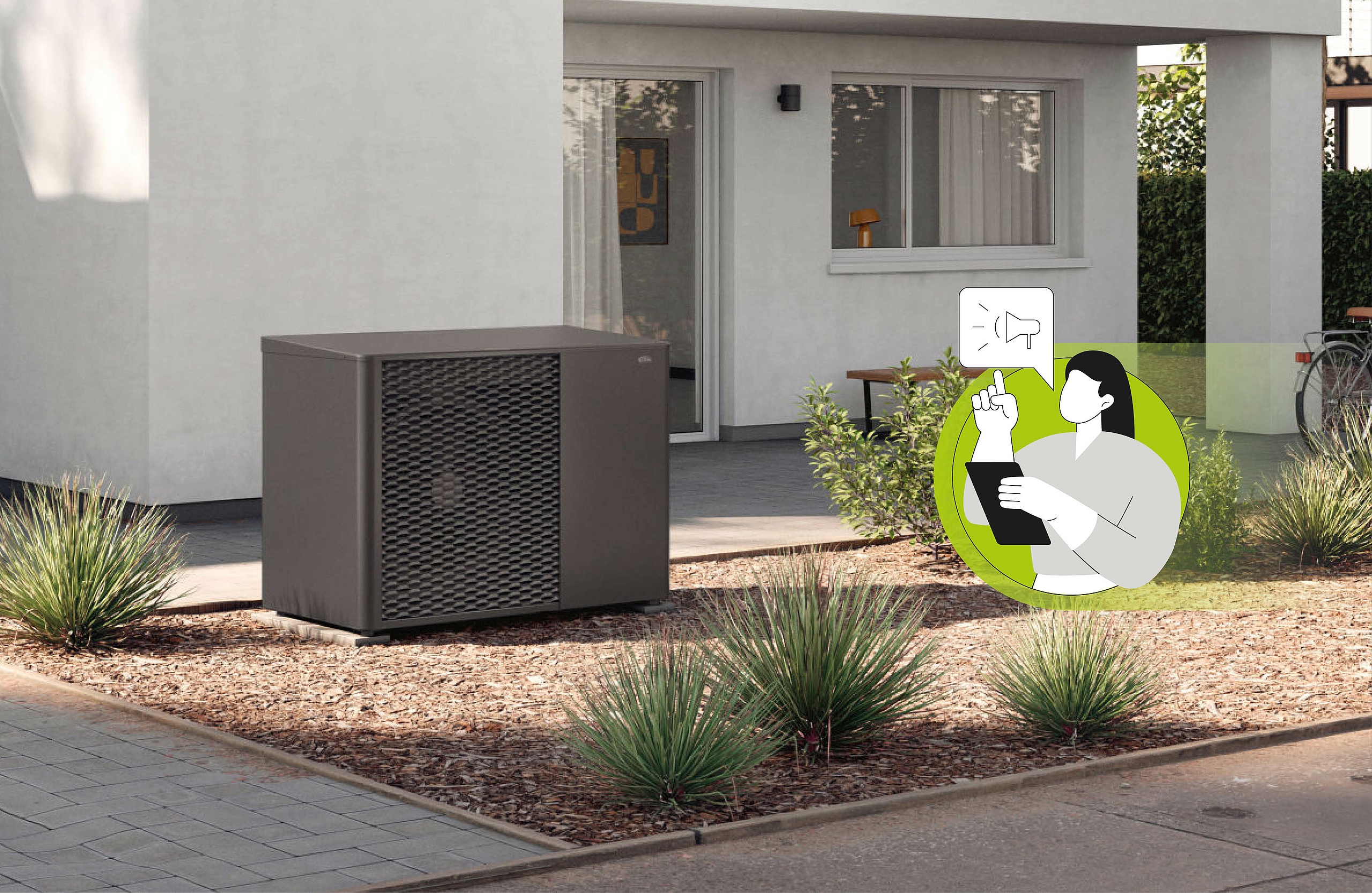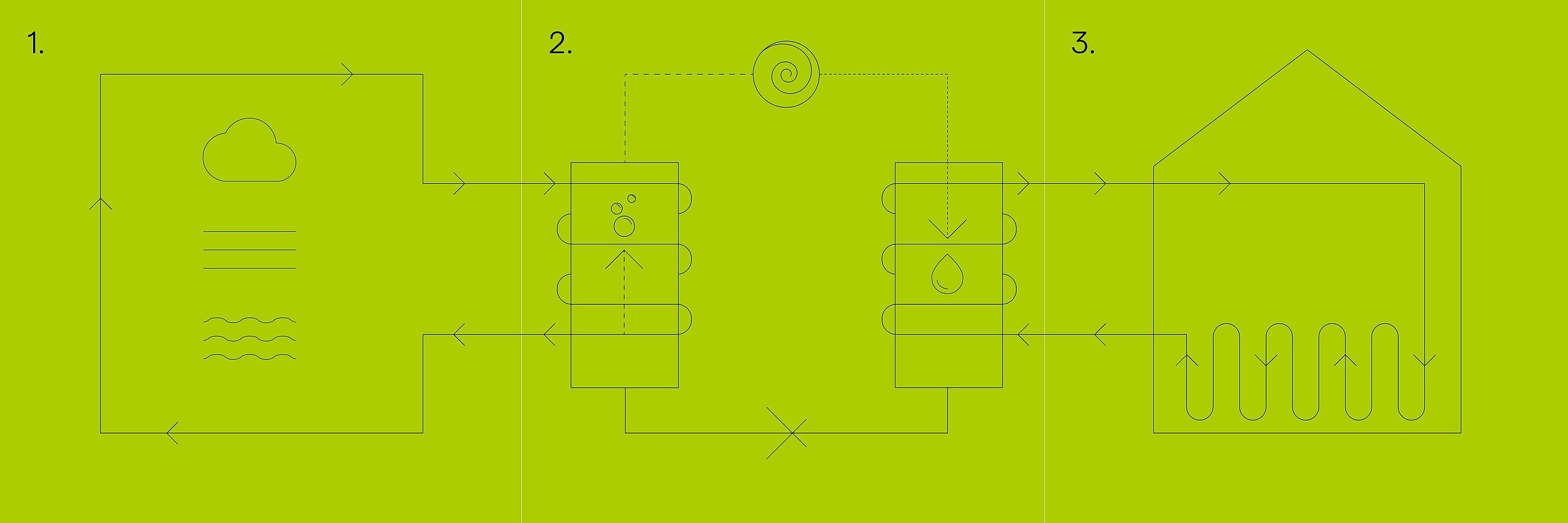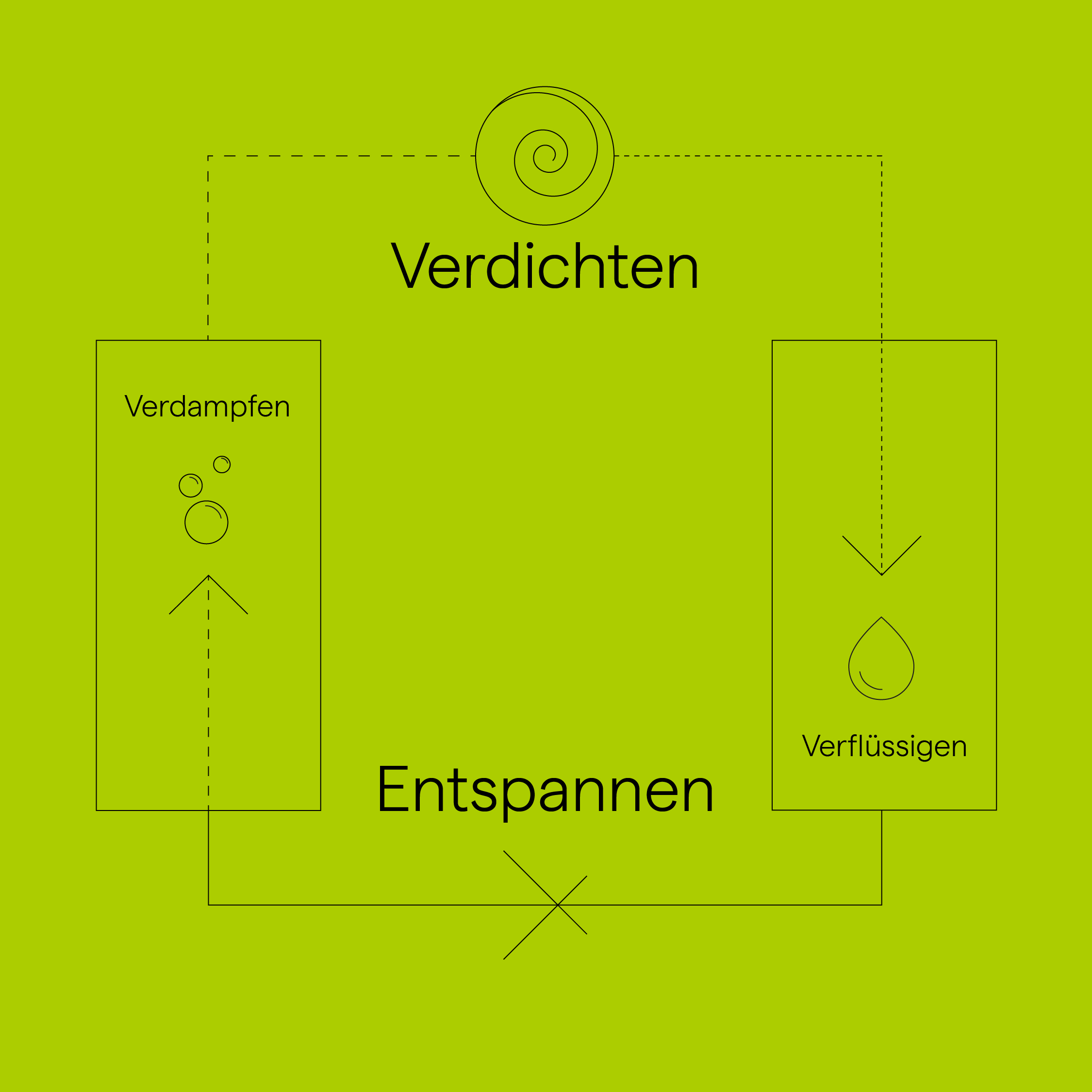How heat pumps work
Efficient heating is that simple

As an environmentally friendly heating and cooling solution, heat pumps help to reduce heating costs and climate-damaging CO2 emissions - and thus minimise the ecological footprint. The principle behind the heating technology is as simple as it is efficient: it is "environmental heat becomes heating heat". But how exactly does a heat pump work?
At a glance
- Heat pumps as an environmentally friendly heating and cooling solution: they reduce CO₂ emissions and heating costs by utilising energy from the environment.
- Operating principle: Environmental energy (air, earth, water) + small quantity of electricity = heat. With 20 % electrical energy and 80 % environmental energy, 100 % heating capacity is generated.
- COP value as a measure of efficiency: Indicates the ratio of electrical power input to heat output. The higher, the more efficient.
- How the heat pump works: heat absorption (air, earth, water), compression by compressing the refrigerant and heat dissipation to the heating system.
- Refrigerant circuit: Refrigerant evaporates, is compressed and releases heat, then liquefies again.
- Flexible use: Provides sufficient heat on cold days and can also cool in summer; operating modes such as monovalent, bivalent, monoenergetic and modulating are possible.
The principle of the heat pump: energy from the environment + electricity = heat
Free energy sources are available right on our doorstep: Heat is stored in the ground, in the air or in groundwater. The principle of the heat pump is based on this, as it utilises this environmental energy for heating your own four walls or for hot water production.
The heat pump uses electricity to convert this energy into heating energy - but only a very small quantity, as a simplified calculation shows: With 20 per cent electrical "auxiliary energy" and 80 per cent free energy from the environment, efficient heat pumps, such as the new x-change dynamic pro models, generate 100 per cent heating energy.
The COP value tells you more about the ratio of electrical power consumed to heat output. The higher the value, the more efficient the heat pump.
How does a heat pump work?
The way a heat pump works is easy to explain: Figuratively speaking, a heat pump works like a household appliance that has been around for a lengthy time, the refrigerator - only in reverse:
- A refrigerator extracts heat from its contents and releases it to the outside at the back of the appliance.
- A heat pump absorbs energy from the outside and releases it into the rooms.
How the heat pump works in three steps

Refrigerant circuit: What happens in the heat pump?

The actual functioning of heat pumps is based on a refrigerant cycle that takes place within the heat pump. What happens in detail?
- The thermal energy meets an environmentally friendly refrigerant. The heating causes it to vaporise and expand.
- The vaporised refrigerant is then compressed under pressure in the compressor. This increases the temperature.
- The hot vapour transfers its heat to the heating system via a heat exchanger. The refrigerant cools down and liquefies again.
- Finally, the liquid refrigerant flows through an expansion valve, which lowers the pressure and cools it down further.
Now the process can start all over again.
Extra tip: Cooling with a heat pump
Incidentally, the principle of the heat pump can also be reversed. In this case, operation is reversed - and the heat pump works like a refrigerator. Instead of bringing heat into the rooms, it extracts heat from them to keep the inside of the house pleasantly cool.
Thanks to this active cooling function - integrated as standard in the x-change dynamic pro heat pumps - you benefit from cosy temperatures at any time of year and can save yourself the additional investment in an air conditioning system.
Does the heat pump principle also work in winter?
Relatively constant temperatures prevail in the soil and groundwater. Depending on the depth, they are around 10 degrees Celsius in both winter and summer. When utilising these energy sources, the heat pump works efficiently at any time of year.
Air source heat pumps, on the other hand, are dependent on the outside temperature. However, the heat pump principle also works when temperatures are below zero. The vaporised refrigerant then only needs to be compressed more in order to reach the required temperature level.
Different operating modes
Technical terms of the heat pump function simply explained
- Monovalent heat pump: The heat pump acts as the only heat source. This is easiest to realise in low energy houses or in new buildings that have very good thermal insulation.
- Bivalent operation: The heat pump is supported by another heat generator. For example, the heat pump heating system can be relieved by combining it with a solar thermal system to generate hot water.
- Monoenergetic operation: On very cold days, the electric heat pump is supported by an additional electric heater - usually a heating rod.
- Modulating heat pump: The heat pump only runs at full speed when it is absolutely necessary - and this is usually only a few days a year. This means it works particularly efficiently.
FAQ
How does a heat pump work, simply explained?
How well does a heat pump work in cold winters?
Does a heat pump work as air conditioning and heating?
At what temperature does an air source heat pump work?